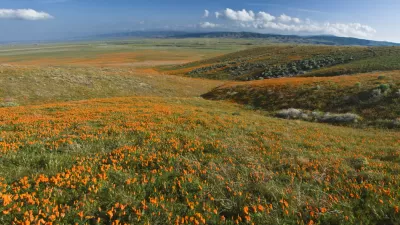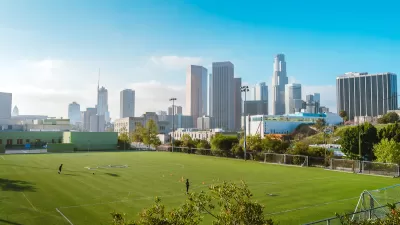Los Angeles County's Community Parks and Recreation Plans (CPRPs) are an evolved methodology to process a broad range of data to better site and design community parks. CPRPs are explained by L.A. County park planner Clement Lau
Community Parks and Recreation Plans (CPRPs) represent Los Angeles County's latest approach for community-based park and recreation planning, writes L.A. County park planner Clement Lau. CPRPs should better plan parks in underserved communities in particular. They go beyond traditional park master plans by analyzing and addressing the park and greening needs of unincorporated communities in a comprehensive way that extends outside of the boundaries of existing parks. In particular, the CPRPs not only seek to improve existing parks, but they provide a roadmap to create new green spaces in non-traditional locations, make specific recommendations to increase the urban forestry, and advance local and regional sustainability goals. Also, the CPRPs are the products of extensive public outreach processes that not only included traditional public meetings, but involved partnerships with local community-based organizations and the application of various community engagement strategies, such as focus groups, stakeholder interviews, surveys, and tabling at community events.
Goals and criteria of CPRPs include:
- Address climate change through Greenhouse Gas (GHG) emission reduction or adaptation planning
- Preserve and enhance recreational areas
- Promote energy and/or water efficiency and savings
- Ensure environmental justice regardless of race, ethnicity, or income class
- Promote overall sustainability on various resources issues
- Better placemaking
- Lower cost to taxpayers & families
- Benefits to public health & the environment
- Greater responsiveness to demographics & changing housing market
- Improved access & mobility
FULL STORY: Park Planning for Underserved Communities in Los Angeles County

Alabama: Trump Terminates Settlements for Black Communities Harmed By Raw Sewage
Trump deemed the landmark civil rights agreement “illegal DEI and environmental justice policy.”

Planetizen Federal Action Tracker
A weekly monitor of how Trump’s orders and actions are impacting planners and planning in America.

The 120 Year Old Tiny Home Villages That Sheltered San Francisco’s Earthquake Refugees
More than a century ago, San Francisco mobilized to house thousands of residents displaced by the 1906 earthquake. Could their strategy offer a model for the present?

BLM To Rescind Public Lands Rule
The change will downgrade conservation, once again putting federal land at risk for mining and other extractive uses.

Indy Neighborhood Group Builds Temporary Multi-Use Path
Community members, aided in part by funding from the city, repurposed a vehicle lane to create a protected bike and pedestrian path for the summer season.

Congestion Pricing Drops Holland Tunnel Delays by 65 Percent
New York City’s contentious tolling program has yielded improved traffic and roughly $100 million in revenue for the MTA.
Urban Design for Planners 1: Software Tools
This six-course series explores essential urban design concepts using open source software and equips planners with the tools they need to participate fully in the urban design process.
Planning for Universal Design
Learn the tools for implementing Universal Design in planning regulations.
Clanton & Associates, Inc.
Jessamine County Fiscal Court
Institute for Housing and Urban Development Studies (IHS)
City of Grandview
Harvard GSD Executive Education
Toledo-Lucas County Plan Commissions
Salt Lake City
NYU Wagner Graduate School of Public Service





























